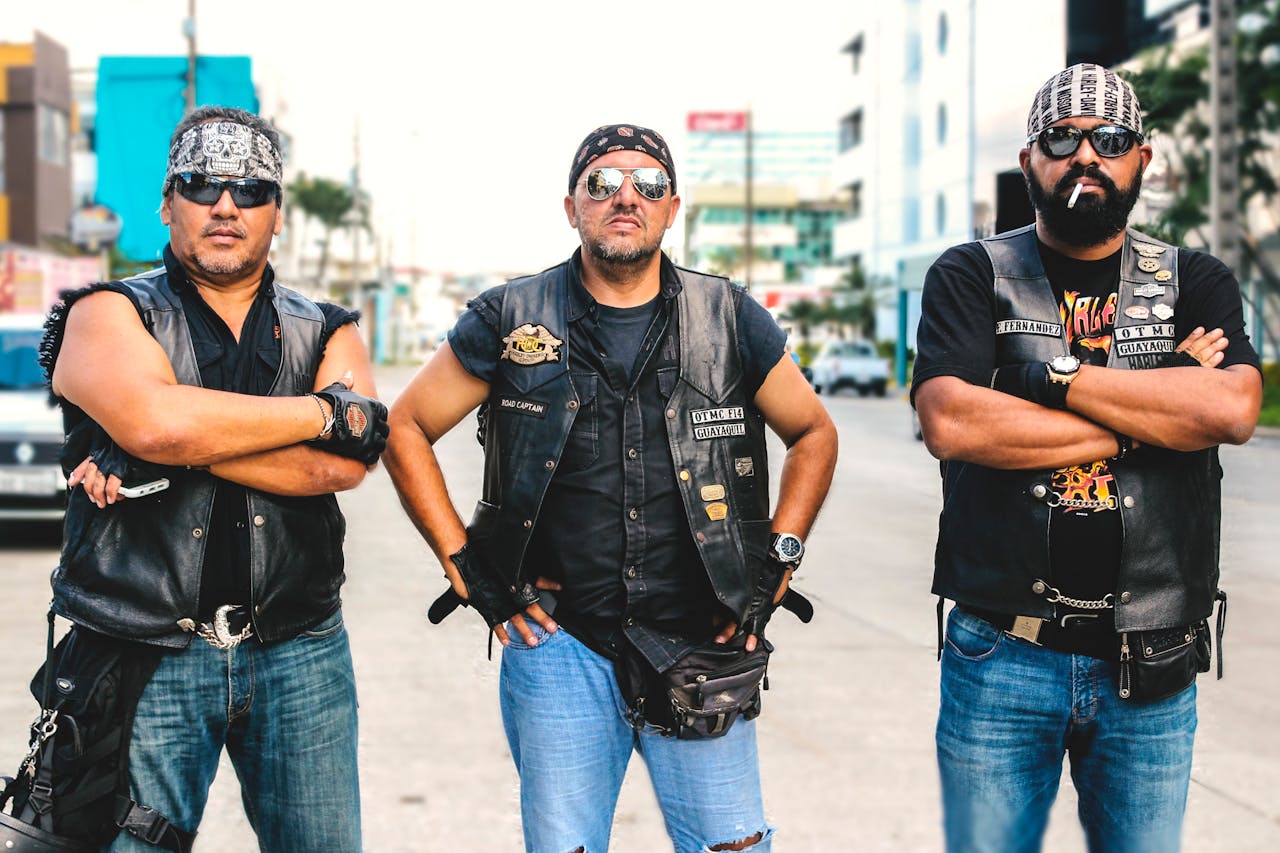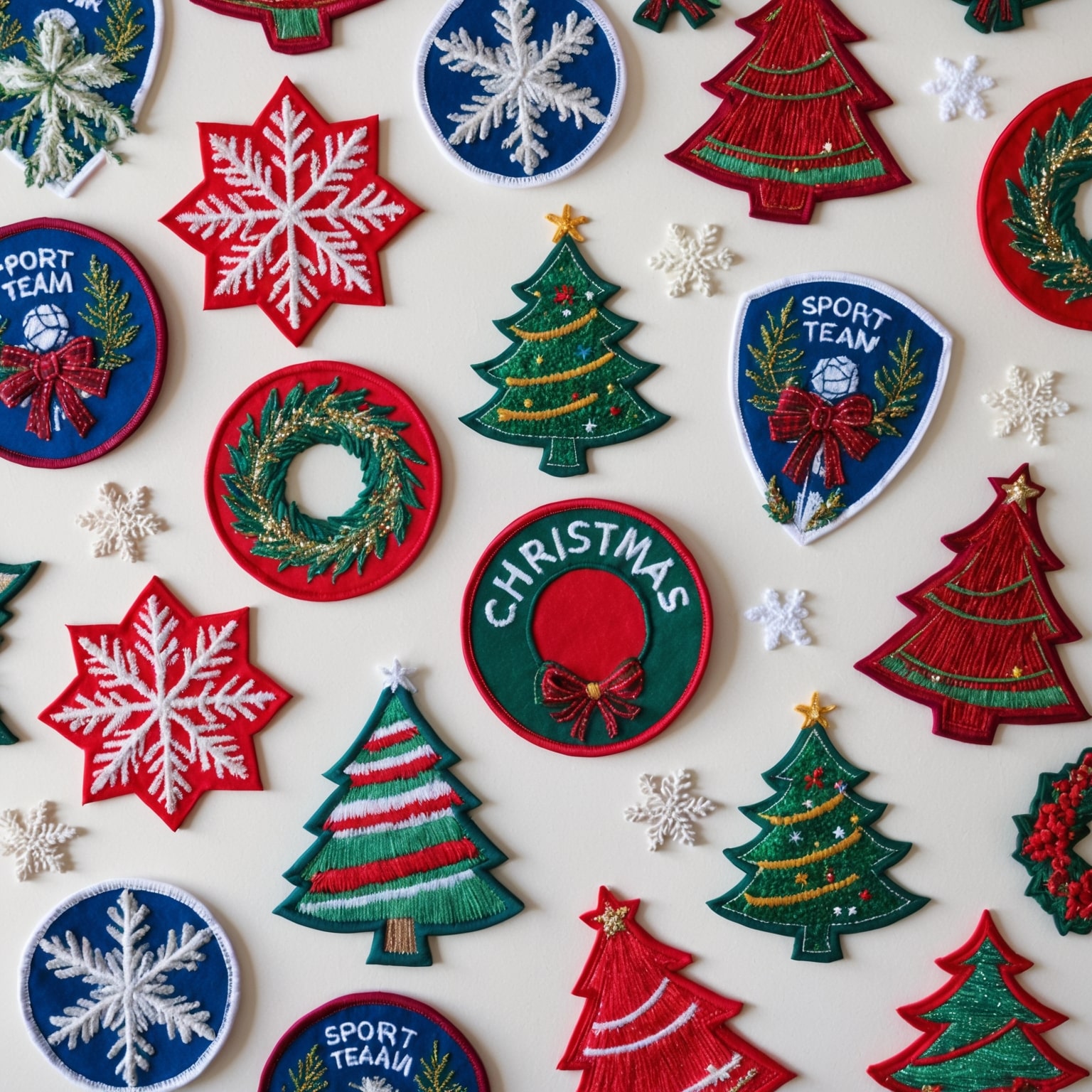The Symbolism of Biker Patches
Biker patches are more than just decorative elements; they are symbols of identity, camaraderie, and rebellion. These patches, sewn onto the leather jackets and vests of motorcyclists, tell stories of the clubs they belong to, the roads they’ve traveled, and the values they hold dear. Over the decades, biker patches have evolved in design, meaning, and cultural significance. This article explores the rich history of biker patches, examining how they have changed and what they represent today.
1. The Origins of Biker Patches
Early Motorcycle Clubs
The origins of biker patches can be traced back to the early motorcycle clubs formed in the aftermath of World War II. Returning veterans sought the camaraderie they experienced during the war and found it in motorcycle clubs. These early clubs began to adopt patches as a means of identification and unity.
Example: The Boozefighters Motorcycle Club, established in 1946, is one of the earliest clubs to use patches. Their patch featured a caricature of a drunk man leaning against a lamp post, symbolizing their rebellious spirit.
Influence of Military Insignia
Military insignia heavily influenced the design and use of biker patches. Many of the founding members of these motorcycle clubs were veterans who adapted the symbols of their military units into their new civilian identities.
Example: The use of rockers (curved patches above and below the main patch) in biker patches is reminiscent of military unit patches, providing structure and hierarchy within the club.
2. The Evolution of Design and Meaning
1950s and 1960s: Rebellion and Counterculture
The 1950s and 1960s saw biker patches evolve into symbols of rebellion and counterculture. This period was marked by the rise of outlaw motorcycle clubs, which rejected mainstream society and its values. The patches worn by these clubs often featured skulls, crossbones, and other provocative imagery.
Example: The Hells Angels Motorcycle Club, founded in 1948, is known for its iconic winged death head patch. This symbol became synonymous with the outlaw biker image.
1970s and 1980s: Identity and Brotherhood
During the 1970s and 1980s, biker patches began to emphasize identity and brotherhood. Clubs expanded their use of patches to include various insignias that represented ranks, roles, and achievements within the club. This period also saw the emergence of support patches, worn by non-members to show their allegiance to a particular club.
Example: The Bandidos Motorcycle Club uses a patch featuring a cartoon Mexican bandit, symbolizing their tough and rebellious persona. They also use patches to denote ranks such as president, vice president, and sergeant-at-arms.
1990s and 2000s: Diversity and Customization
The 1990s and 2000s brought diversity and customization to biker patches. As motorcycle culture expanded globally, new clubs formed with unique identities and cultural influences. This era also saw the rise of custom patches, allowing individual bikers to express their personal journeys and affiliations.
Example: The Blue Knights, an international law enforcement motorcycle club founded in 1974, use patches featuring a knight on a motorcycle. Their patches symbolize their commitment to law enforcement and motorcycle riding.
3. The Components of Biker Patches
The Back Patch
The back patch is the most significant component of a biker’s jacket or vest. It usually consists of three parts: the top rocker, the bottom rocker, and the centerpiece. The top rocker typically displays the club’s name, the bottom rocker indicates the region or chapter, and the centerpiece is the club’s logo or emblem.
Example: A typical Hells Angels back patch features the club’s name on the top rocker, the chapter location on the bottom rocker, and the winged death head in the center.
Side Patches and Rockers
Side patches and rockers provide additional information about the biker’s role, rank, or achievements within the club. These patches can indicate positions such as president, vice president, or road captain, and may also include patches for specific milestones or events.
Example: A Bandidos member might wear a side patch indicating their role as sergeant-at-arms, signifying their responsibility for maintaining order within the club.
Support Patches
Support patches are worn by non-members to show their allegiance to a particular club. These patches typically feature the club’s colors and symbols but are designed to distinguish supporters from full members.
Example: A supporter of the Outlaws Motorcycle Club might wear a support patch featuring the club’s skull and crossed pistons logo.
4. The Cultural Significance of Biker Patches
Symbols of Identity and Belonging
Biker patches serve as powerful symbols of identity and belonging. They signify membership in a tight-knit community and reflect the values and traditions of the club. Wearing a patch is a declaration of loyalty and pride.
Example: A member of the Mongols Motorcycle Club wears their patch as a symbol of their commitment to the club’s brotherhood and values.
Expressions of Rebellion and Independence
For many bikers, patches represent rebellion and independence. They are a way to reject societal norms and assert a unique identity. This aspect of biker culture has been romanticized in popular media, further cementing its association with freedom and non-conformity.
Example: The skull and crossbones motif in many biker patches evokes a sense of defiance and a willingness to live by one’s own rules.
Commemoration and Tribute
Biker patches are also used to commemorate significant events, milestones, and fallen members. Memorial patches honor those who have passed away, ensuring their memory lives on within the club.
Example: A patch with the words “In Memory of…” and a member’s name is often worn by club members to pay tribute to a deceased brother or sister.
5. The Role of Technology in Patch Evolution
Advancements in Embroidery Techniques
Technological advancements in embroidery have revolutionized the creation of biker patches. Modern embroidery machines can produce highly detailed and intricate designs, allowing clubs to create unique and visually striking patches.
Example: A detailed dragon design on a custom patch for a dragon-themed motorcycle club can be produced with precision using modern embroidery technology.
Customization and Personalization
The ability to customize and personalize patches has expanded significantly with digital design tools. Individual bikers can now create custom patches that reflect their personal journeys, affiliations, and achievements.
Example: A biker might design a custom patch featuring a map of their cross-country ride, highlighting significant stops and dates.
Global Influence and Exchange
The internet and social media have facilitated the global exchange of ideas and designs, influencing the evolution of biker patches. Clubs from different parts of the world can share their patches, leading to cross-cultural influences and the emergence of new styles.
Example: A motorcycle club in Japan might adopt design elements from American biker patches, blending them with traditional Japanese symbols.
6. The Legal and Ethical Aspects of Biker Patches
Trademark and Copyright Issues
As biker patches become more intricate and unique, issues of trademark and copyright protection have emerged. Clubs often register their logos and patches to prevent unauthorized use and protect their intellectual property.
Example: The Hells Angels Motorcycle Club has registered their winged death head logo as a trademark and actively protects it from unauthorized use.
Respect and Etiquette
Wearing biker patches comes with a code of respect and etiquette. Non-members should avoid wearing patches that could be mistaken for club insignias, as this can lead to misunderstandings and conflicts.
Example: A motorcyclist who is not affiliated with any club should avoid wearing a three-piece patch (top rocker, bottom rocker, and centerpiece) to prevent confusion and potential altercations.
7. The Future of Biker Patches
Sustainability and Eco-Friendly Materials
As environmental awareness grows, some clubs are exploring sustainable and eco-friendly materials for their patches. This shift reflects a broader commitment to social responsibility within the biker community.
Example: A motorcycle club might choose to produce their patches using organic cotton and environmentally friendly dyes.
Digital Integration and Smart Patches
The future of biker patches may include digital integration and smart technology. Imagine a patch that can change colors, display digital messages, or even track the wearer’s rides using GPS technology.
Example: A smart patch could display a digital counter of miles ridden or change colors based on the rider’s achievements.
Preserving Tradition While Embracing Change
While technology and new materials will influence the evolution of biker patches, preserving the tradition and heritage of these symbols remains crucial. Clubs will continue to honor their history while embracing innovation.
Example: A motorcycle club might create a new design that incorporates both traditional embroidery and modern digital elements, blending the old with the new.
The Enduring Legacy of Biker Patches
Biker patches have evolved significantly over the decades, from simple symbols of identification to complex emblems of identity, rebellion, and brotherhood. These patches tell the stories of the clubs and individuals who wear them, reflecting a rich tapestry of history, culture, and personal journeys.
As technology and society continue to evolve, so too will the design and significance of biker patches. However, their core purpose remains unchanged: to honor the values, achievements, and connections that define the biker community. By preserving their traditions and embracing new possibilities, biker patches will continue to serve as powerful symbols of identity and pride for generations to come.
If you are interested in purchasing high-quality custom patches, feel free to call us at 1-877-503-8485 or fill out one of our FREE quotes here.




